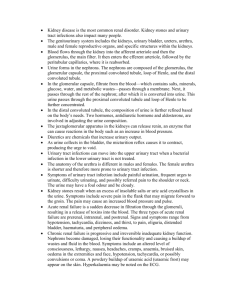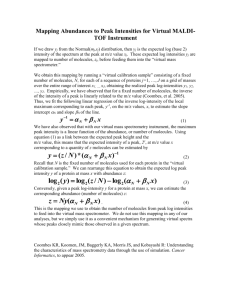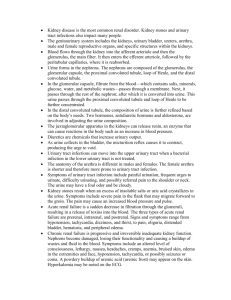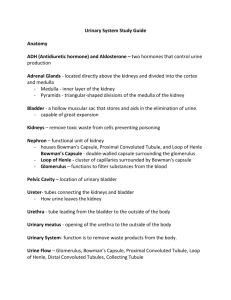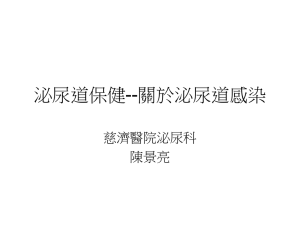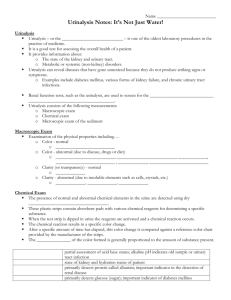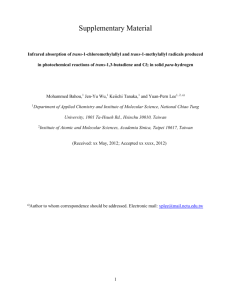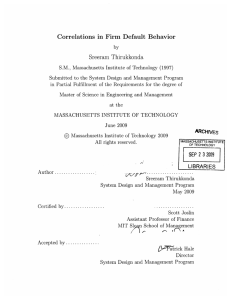Since albuminuria as the established biomarker of diabetic
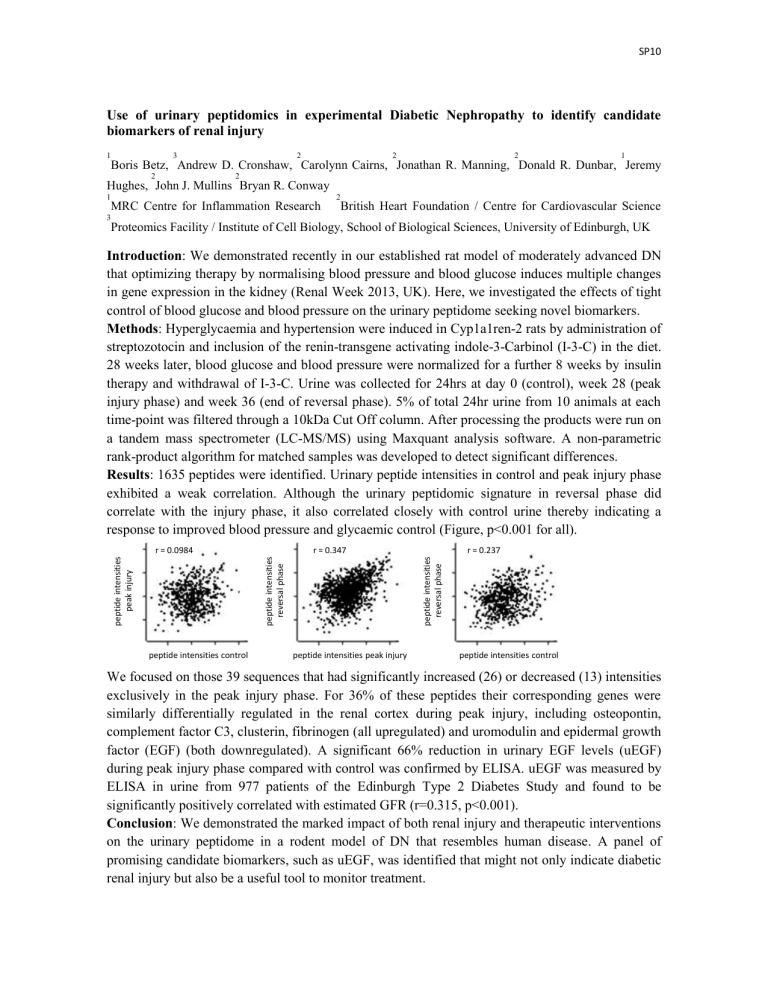
SP10
Use of urinary peptidomics in experimental Diabetic Nephropathy to identify candidate biomarkers of renal injury
1
Boris Betz,
3
Andrew D. Cronshaw,
2
Carolynn Cairns,
2
Jonathan R. Manning,
2
Donald R. Dunbar,
1
Jeremy
Hughes,
2
John J. Mullins
2
Bryan R. Conway
1
MRC Centre for Inflammation Research
2
British Heart Foundation / Centre for Cardiovascular Science
3
Proteomics Facility / Institute of Cell Biology, School of Biological Sciences, University of Edinburgh, UK
Introduction : We demonstrated recently in our established rat model of moderately advanced DN that optimizing therapy by normalising blood pressure and blood glucose induces multiple changes in gene expression in the kidney (Renal Week 2013, UK). Here, we investigated the effects of tight control of blood glucose and blood pressure on the urinary peptidome seeking novel biomarkers.
Methods : Hyperglycaemia and hypertension were induced in Cyp1a1ren-2 rats by administration of streptozotocin and inclusion of the renin-transgene activating indole-3-Carbinol (I-3-C) in the diet.
28 weeks later, blood glucose and blood pressure were normalized for a further 8 weeks by insulin therapy and withdrawal of I-3-C. Urine was collected for 24hrs at day 0 (control), week 28 (peak injury phase) and week 36 (end of reversal phase). 5% of total 24hr urine from 10 animals at each time-point was filtered through a 10kDa Cut Off column. After processing the products were run on a tandem mass spectrometer (LC-MS/MS) using Maxquant analysis software. A non-parametric rank-product algorithm for matched samples was developed to detect significant differences.
Results : 1635 peptides were identified. Urinary peptide intensities in control and peak injury phase exhibited a weak correlation. Although the urinary peptidomic signature in reversal phase did correlate with the injury phase, it also correlated closely with control urine thereby indicating a response to improved blood pressure and glycaemic control (Figure, p<0.001 for all). r = 0.0984
r = 0.347
r = 0.237
peptide intensities control peptide intensities peak injury peptide intensities control
We focused on those 39 sequences that had significantly increased (26) or decreased (13) intensities exclusively in the peak injury phase. For 36% of these peptides their corresponding genes were similarly differentially regulated in the renal cortex during peak injury, including osteopontin, complement factor C3, clusterin, fibrinogen (all upregulated) and uromodulin and epidermal growth factor (EGF) (both downregulated). A significant 66% reduction in urinary EGF levels (uEGF) during peak injury phase compared with control was confirmed by ELISA. uEGF was measured by
ELISA in urine from 977 patients of the Edinburgh Type 2 Diabetes Study and found to be significantly positively correlated with estimated GFR (r=0.315, p<0.001).
Conclusion : We demonstrated the marked impact of both renal injury and therapeutic interventions on the urinary peptidome in a rodent model of DN that resembles human disease. A panel of promising candidate biomarkers, such as uEGF, was identified that might not only indicate diabetic renal injury but also be a useful tool to monitor treatment.
